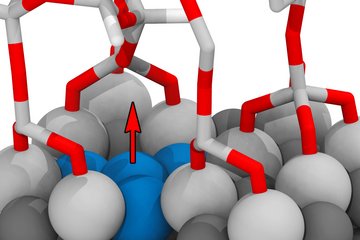All genres
1521.
Talk
Correlative EBSD-TEM-APT studies of GBs in Cu(In,Ga)Se₂ thin-films solar cells. Sfmu 2013, Nantes, France (2013)
1522.
Talk
Nano-to-macro-scale modeling of hierarchical biocoposites. SPP 1420 Summer School, UIm, Germany (2013)
1523.
Talk
Arthropod cuticle: A biological multi-functional composite used as template for nano-to-macro-scale hierarchical modeling. Seventh International Conference on Materials Structure and Micromechanics of Fracture, Brno, Czech Republic (2013)
1524.
Talk
Combined theoretical and experimental studies of ductile Mg alloys. Seminar lecture at the Technical University Bergakademie Freiberg, Freiberg, Germany (2013)
1525.
Talk
Combined theoretical and experimental studies of ductile Mg alloys. International Symposium on Atomistic Modeling for Mechanics, Tokyo, Japan (2013)
1526.
Talk
High strength and ductile low density steels: Simplex and Kappa. Symposium on Adventures in the Physical Metallurgy of Steels, Cambridge, UK (2013)
1527.
Talk
Nanostructures in 1 Billon Tons: Interface Engineering in Complex Steels and Biological Nanocomposites. Materialwissenschaftliches Kolloquium, Universität Hamburg-Harburg, Hamburg, Germany (2013)
1528.
Talk
Iron – Mythology and High Tech: From Electronic Understanding to Bulk Nanostructuring of 1 Billion Tons. Summer School 2013 on Functional Solids – FERRUM - organized by Leibniz University Hannover, Goslar, Germany (2013)
1529.
Talk
Nanostructuring 1 Billion Tons: Combining Rapid Alloy Prototyping, Multiscale Models, and Characterization for Advanced Manufacturing. 2nd World Congress on Integrated Computational Materials Engineering, Salt Lake City, UT, USA (2013)
1530.
Talk
Das flexible Kristalplastizitäts-Modell ’DAMASK’. Institutssemniar Lehrstuhl für Werkstoffkunde und Werkstoffmechanik, Technische Universität München, Garching, Germany (2013)
1531.
Talk
Effizientes Legierungsdesign durch kombinatorische Metallurgie und Prozesstechnik. Forschungsdialog Rheinland, IHK Wuppertal-Solingen-Remscheid, Wuppertal, Germany (2013)
1532.
Talk
Observation of geometrically necessary dislocation arrangements at individual grain boundaries deformed in constraint micro bending tests. GDRi CNRS MECANO General Meeting on the Mechanics of Nano-Objects, MPIE, Düsseldorf, Germany (2013)
1533.
Talk
Polycrystalline Ice under Cyclic Loading Talk. DGM Arbeitskreissitzung Mikrostrukturmechanik, Osnabrück, Germany (2013)
1534.
Talk
The general crystal plasticity framework 'DAMASK'. Institutsseminar, Institute of Materials Simulation, Department of Materials Science, University of Erlangen-Nürnberg, Fürth, Germany (2013)
1535.
Talk
Quantative damage analysis & in-situ testing to investigate cut-edge failures in AHSS. Cut-edge behavior and damage resistance of AHSS, Maizières-lès-metz, France (2013)
1536.
Talk
Deformation mechanisms in magnesium characterized by single crystal indentation. IMDEA Magnesium Workshop, Madrid, Spain (2013)
1537.
Talk
Analysis of Grain Boundaries in ECAP-Cu observed by 3D-EBSD. RexGG 2013, Sydney Australia (2013)
1538.
Talk
Arthropod cuticle: A biological multi-functional composite used as template for nano-to-macro-scale hierarchical modeling. Advanced Materials 2013, Zhenjiang, China (2013)
1539.
Talk
Influence of hydrogen on dual-phase steel micro-mechanics. 2nd International Workshop on Physics-Based Modelling of Material Properties & Experimental Observations, Antalya, Turkey (2013)
1540.
Talk
From defectant theory to nanoscale transformations in steels. Workshop on 'Current Challenges in Materials Physics' at Physics Faculty, University Göttingen, Göttingen, Germany (2013)











